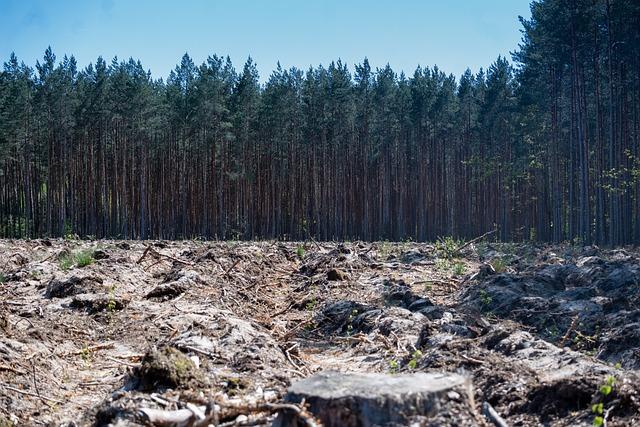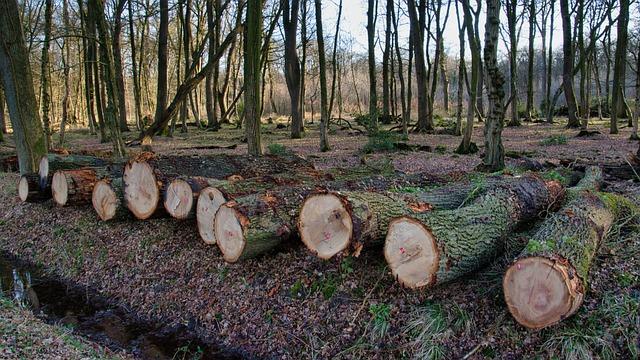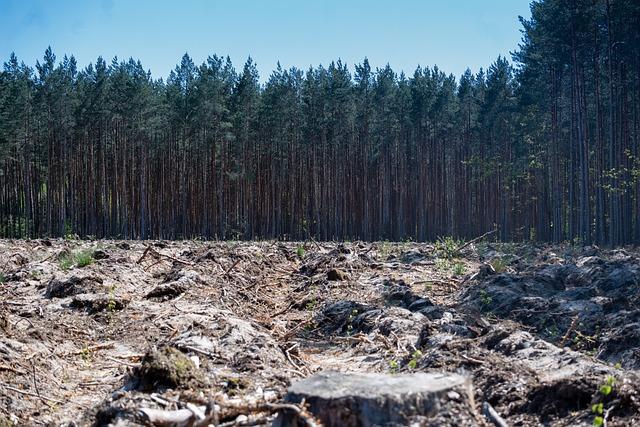INTRODUCTION
Forests are essential to the survival of countless species, including humans, on our planet. However, rampant deforestation poses a severe threat to these vital ecosystems worldwide. In this article, we delve into the causes of deforestation, its detrimental impact on the environment, potential solutions, and the urgent need for action.
DEFORESTATION CAUSES

(Image: Pixabay/@Bazela)
Deforestation is primarily driven by human activities such as agriculture, logging, urbanization, and mining. The demand for agricultural land, timber, and development has led to widespread clearing of forests, especially in regions with valuable resources.
This unsustainable exploitation of natural resources often occurs without proper planning or consideration for the long-term consequences, resulting in massive deforestation rates that endanger biodiversity and disrupt ecological balance.
Moreover, infrastructure projects like roads and dams further facilitate deforestation by opening up previously inaccessible forest areas to exploitation, exacerbating the problem.
ENVIRONMENTAL IMPACT

(Image: Pixabay/@darwisalwan)
The environmental impact of deforestation is alarming and far-reaching. Forests play a crucial role in regulating climate, absorbing carbon dioxide, and maintaining global carbon balance. The loss of forests contributes significantly to greenhouse gas emissions, exacerbating climate change.
Deforestation also leads to loss of habitat for countless plant and animal species, pushing many towards extinction. It disrupts water cycles, increases soil erosion, and negatively impacts local and global biodiversity.
The degradation of forest ecosystems not only threatens wildlife but also endangers human populations who rely on forests for resources like clean water, food, medicine, and protection from natural disasters.
SOLUTIONS

(Image: Pixabay/@HelgaKa)
To address the pressing issue of deforestation, a multi-faceted approach is required. Sustainable land management practices, reforestation efforts, and better enforcement of forest conservation laws are essential steps towards combating deforestation.
Supporting indigenous communities' rights and empowering local stakeholders to participate in forest management can also be key strategies in preserving forests and promoting sustainable development.
Consumers can contribute by choosing responsibly sourced products, advocating for forest protection policies, and supporting organizations working to conserve forests globally.
CONCLUSION
In conclusion, deforestation remains a critical environmental challenge that demands immediate attention and concerted efforts from individuals, governments, and industries worldwide. By understanding the root causes of deforestation, its environmental repercussions, and adopting sustainable practices, we can work towards safeguarding our precious forests for future generations.
FAQs
What are the main causes of deforestation?
Deforestation is primarily caused by activities such as agriculture, logging, urbanization, and mining that result in the clearance of forests for various purposes.
How does deforestation impact the environment?
Deforestation contributes to climate change, loss of biodiversity, soil erosion, disrupted water cycles, and poses threats to both wildlife and human populations reliant on forest resources.
What can individuals do to help combat deforestation?
Individuals can support sustainable practices, choose responsibly sourced products, advocate for forest conservation policies, and engage in efforts to raise awareness about the importance of preserving forests.

